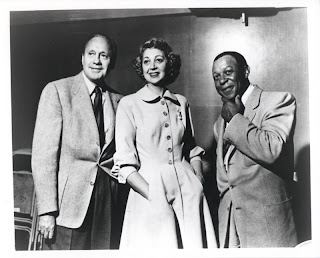
I enjoy watching animated commercials from the 1950s, far more than I do some of the animated shorts that came out during that time. I don’t really know a lot about them, though. After all, it’s not like they have credits on them.
There were a number of small studios in New York which made animated spots. In fact, if you read directories of production houses back then, all of them seem to have been able to provide clients with animation if that’s what they wanted (whether it was sub-contracted, I don’t know). Among the best-known of the New York commercial cartoon houses 60 years ago were Shamus Culhane, Transfilm and Tempo Productions; at least they’re known to me because their owners worked on theatrical cartoons not too many years earlier. In glancing over some trade ads, I came across one for “Animated Film Corporation,” run by Al Stahl. I’d never heard of it and I didn’t remember seeing Stahl’s name on any theatrical cartoons out of New York. So I thought I’d hunt around.
Studious researchers have already put a chunk of information on the internet about him.
The reference site at Lambiek.net informs us that Stahl was an assistant animator at Terrytoons (in the early 30s, evidently) and then went into comics. He copyrighted “Needles Loses His Noodle” and “Happy Trailings” in 1936 (and something with Richard Mackay called “Al and Mac”) and “The Family Trailer No. 1” (in quarto) the following year. He also worked on Oswald the Rabbit comics for DC.

Albert Lester Stahl was born in New York on July 3, 1916, the oldest of two sons of Jesse and Helen Stahl. They were living with an uncle in 1920 but by 1930, had a home in Atlantic City. Stahl was living on his own on West 91st Street in New York City in 1940 and working as a commercial artist. He enlisted in the Army in 1942 (he served as a Private First Class).
He opened his own commercial animation studio in early 1950, but the ad you see above is from 1952. In 1953, his clients included NBC (promotional announcements), Margo Wines and Marvel Mystery Oil, and he was also producing combination live action/animated commercials for the Yonkers and Roosevelt Raceways. The two best-known pieces of animation at NBC are the peacock spreading its feathers and the “snake” letters but both came after this and Stahl had nothing to do with them. A couple of years later, his studio did animation/live action commercials for Chunkynut Candy with Abbott and Costello. As you can see in the top picture, the studio’s earliest clients included the makers of Kelvinator (through Geyer, Newell and Ganger) and Lever Bros.’ Rinso. The Screen Gems studio had attempted to make animated shorts with Li’l Abner a decade earlier with decidedly unhappy results; the Rinso bird’s origins are in the tweeting jingle used on radio commercials for years (Shamus Culhane also had the Rinso account in 1952). Unfortunately, it doesn’t appear any of these commercials are on-line so I can’t direct you to them.
Stahl spent part of 1954 trying to implement industry standards for animation stands and color TV film at the lab level. He also had either an office or studio in New Rochelle, the home of Terrytoons. Stahl’s company also provided animation for “Black Fox” (1962), a 35-minute, black and white film narrated by Marlene Dietrich on Hitler’s rise to power.
Stahl died in New York on December 10, 1999. You can
read more about him here.












































